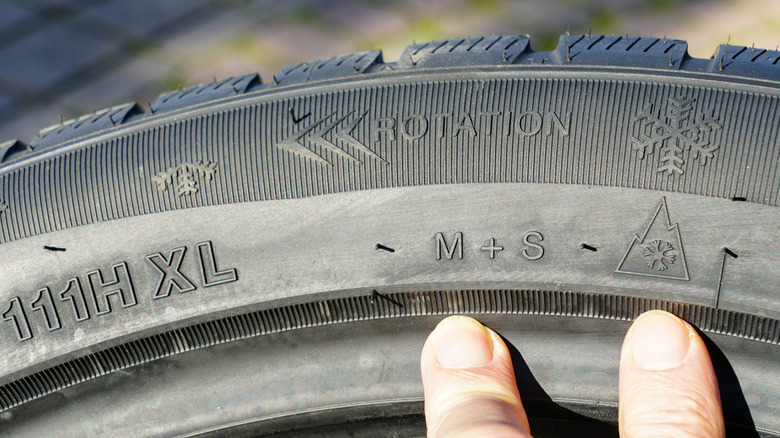
Keeping an eye on your car's tires is a key part of vehicle maintenance, and that involves promptly replacing them when they wear out. Some drivers prefer to change car tires themselves rather than taking their car to a shop, but it's easy to make mistakes when you're changing the tires
. Among other things, not checking that you have the right type of tire for your car and that the tire is inflated properly are two common mistakes.Another potential mistake that some owners might make is putting
the car's tires on the wrong way. Some tires can be mounted in any orientation, but others need to be installed in a specific way; otherwise, you could compromise their performance. Whether you need to worry about putting the tires on the wrong way around depends on the type of tires you're buying: Symmetrical tires can go anywhere, while asymmetric or directional tires have to be installed in a specific orientation or position on the car.
It's easy to spot if a tire needs to be mounted in a specific direction, as it will be clearly marked on the sidewall of the tire. The outside edge of an asymmetric tire is marked on the sidewall as "Outside," while the inner side is marked "Inside." If the tire is directional, there will be arrow on the side of the tire next to the word "Rotation." The direction of the arrow needs to match the direction of the tire's rotation.
Read more: 12 Cool Car Gadgets You Can Buy From Amazon In 2025
What Are Asymmetric And Directional Tires?

There are a few key differences between symmetrical and asymmetric tires that primarily relate to their intended purpose. Symmetrical tires feature identical construction on both sides of the tire, while asymmetric tires usually have tougher, stiffer tread blocks on the outer edge of the tire and smaller tread blocks on the inner edge. This improves the overall performance of the tire, with the outer edge giving the car more grip during cornering, and the inner tire channeling water away from the tire surface.
Directional tires feature a tread pattern designed to be effective in a set direction, with that pattern usually helping the tire disperse water or produce less noise on the road. These two tire types are not mutually exclusive — some tires are asymmetric and directional, in which case they'll have both the "Outside" markings and the arrow markings described above. Many of these tires are designed for performance vehicles, since they require higher levels of grip and stability than a standard car.
Beyond needing to be installed according to the instructions, asymmetric and directional tires also require a different kind of tire rotation than symmetrical tires. These tires can only be rotated from the front to the rear on the same side of the car, and shouldn't be rotated between the left and right sides of the car. Symmetrical tires, meanwhile, can be rotated between both sides.
Want the latest in tech and auto trends? Subscribe to our free newsletter for the latest headlines, expert guides, and how-to tips, one email at a time.
Read the original article on SlashGear.










